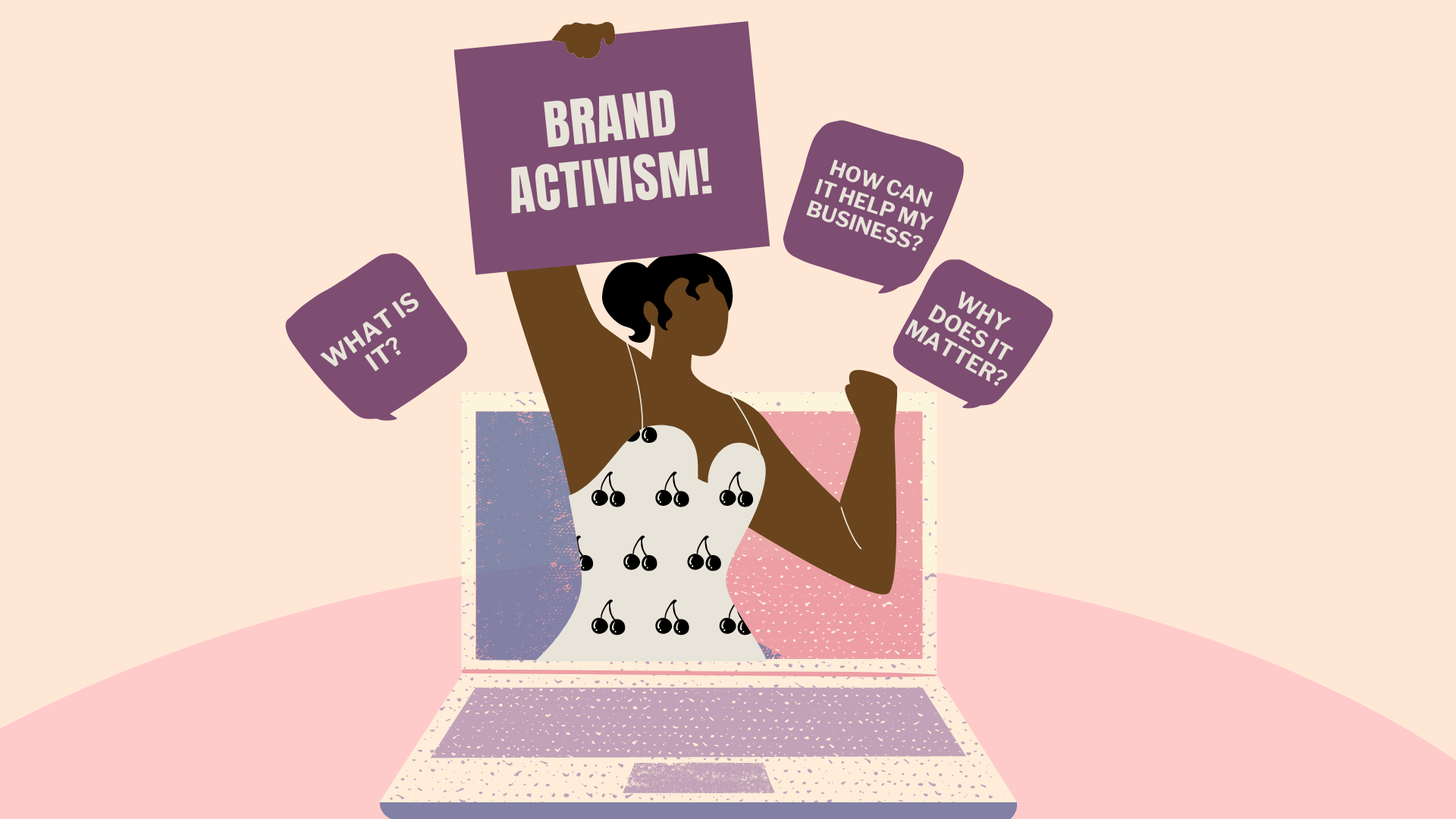Brand activism has recently taken the spotlight in the land of digital marketing. From 2020 to now, global activism has undeniably reached its pinnacle. And, to be frank, we love it. However, this raises the issue of where brands fit on the figurative “scale” of activism and how they participate. These days, consumers value honesty and authenticity above all else, and they’re constantly supporting brands that are able to speak out for a cause. However, expressing a political viewpoint has always been difficult and doing so can be challenging for businesses to navigate. Large numbers of the consumer demographics, such as millennials, search for brands that care about more than just money. In this post, we’ll look at what brand activism is, what you should do next to start taking action about the things you care for, and more. Brand Activism is when a business takes a stand on a social, environmental, economic, or political issue. Companies may actively support a cause because it aligns with their core values/ vision of the brand, for good publicity, to boost their bottom line, or for various other reasons. Businesses may help their cause by making a public statement, campaigning, donating money to specific groups and organizations, volunteering, or making a statement through their ads and promotional campaigns. One of the tricky aspects of today’s tumultuous political climate is ensuring that your brand’s advocacy is seen as genuine. Making a statement isn’t enough anymore; buyers want to see progress that backs up your stance on the issue. Otherwise, the message can potentially come off as hypocritical. Consequently, this could cause you to be viewed as an opportunist out to profit from the circumstance. We might imagine a structure that encourages a company to develop an activist strategy using the definition above as a starting point. It’s important to note that activism does not have to be progressive; it can even be regressive. The tobacco industry who for too long ignored the damage their cigarettes caused to smokers, even though their own findings proved otherwise – became the poster child for regressive advocacy. They sold the “benefits” of smoking in a manner that affected customers. On the progressive activism front, we’re seeing an increasing number of businesses attempting to make a difference in the world’s most pressing issues. These businesses have a greater function than just making a profit, and they are increasingly regarded as industry leaders. Funny enough, tobacco ads were once seen as progressive. Look at the example below. That ad was once attributed to the protest of women’s rights. There are six types of categories that fall under brand activism: Being industry leaders, businesses should know their influence and how taking a stance and taking action will have a big impact on the world. Aside from this, living in a corporate and commerce-driven world has not diminished people’s need to find purpose in their lives . The new state of the planet has brought this home to consumers ever further. In today’s increasingly contested and political climate, consumers are becoming more vocal in their views about what is happening in the world. Furthermore, their purchasing habits are transforming into strong commitments to equality, sustainability, and unity, rather than just purchases. Customers are inviting brands to make those changes by demanding reform by their consumer choices. People are unlikely to want to give up the ease or comfort of their shopping routines, but brands must adapt as well. Knowing how devastating it can be for a business to make a public declaration of support or disapproval on a topic, it’s tempting to assume that remaining neutral is the safest choice. However, this isn’t always the case. The #DeleteUber initiative, which prompted over 200,000 users to delete the Uber app after the organization continued to run its service during the taxi strike in protest of Trump’s Muslim ban, is an outstanding example of this. When Uber portrayed itself as a courageous organization unafraid to voice its opinion, people were outraged that Uber CEO Travis Kalanick did not outright oppose Trump’s immigration order. The order was particularly divisive for Uber because it involved a significant number of its drivers, and Kalanick sat on Trump’s business advisory board. Although Uber’s position was muddled, and the company’s business suffered as a result, Lyft was lauded for resisting the order and contributing a million dollars to the ACLU. Lyft exceeded Uber in App Store sales for the first time that day, proving that taking a stance can have a positive effect on sales. Taking a political stance strengthens the company’s reputation and tells customers that you’re well-informed. Take, for example, Brexit. Consumers began turning at brands that did business in Europe to speak out and express their position as soon as the news of Brexit became public. Large corporations who preferred to stay quiet became severely chastised and lost their customers’ trust. As Adam Fetcher of Fast Company points out, “there are a lot of companies who want to be like Ben & Jerry’s but don’t have a deep history of intervening on behalf of issues bigger than their own success.” There is no textbook for building credibility, and there are definitely no shortcuts. It necessitates a desire to lay a basis that is not based on public relations. If you can place your emphasis on effect rather than publicity, the press can give your actions the attention they deserve — at a time when you really deserve it.” “By selecting products that agree with their ideals, consumers are voting with their wallets for the kinds of companies they want in the planet — and paving the way toward a more competitive and just economy,” We’re living in an unfortunate time when governments and institutions are providing less and less moral guidance, and we’ve come to demand that from the products we buy,” B the Change says. When your business takes a political stand, you’re expressing your ideals, which will help you establish rapport and loyalty with consumers who respect those values. Furthermore, engaging in brand activism has the positive effect of seeing your customers equate purchasing from your business with supporting their own ideals. Don’t undervalue the strength of this connection; it provides your customers with an emotional incentive to buy your brand. This emotional bond is stronger than every product’s content or costs. Patagonia, for example, offers environmentally-conscious outdoor apparel but has little advertisement outside of promotions targeted at its hiking, skiing, and surfing populations. Their European Marketing Director, Alex Weller, clarified that the company’s marketing strategy is to “create a movement” based on the ideals it holds with its communities – a correlation that can’t be made by conventional advertisements. According to Deloitte, purpose-driven brands win three times more market share and expand three times faster on average than their competitors, all while improving employee and consumer loyalty. “This movement can only intensify as young people around the world grow up with a stronger sense of purpose than past generations and seek out brands that actively benefit issues they care about.” Physical availability is almost assured for omnichannel and omnipresent shopping. Building mental availability, on the other hand, is more costly, sensitive, and difficult to achieve. According to the Deloitte survey, “all of these businesses are outpacing their rivals and making an effect on anyone they meet by leading with purpose, being honest about how they share stories and express their impact, reflecting on all humans, and imbibing empathy.” So, if you want to invest in a company that can rise in value while simultaneously making the planet a safer place, go for an activist brand. We’ve spoken about the optimistic effects of brand activism, but there is a negative aspect of brand activism that emerges as corporations follow regressive practices that damage the common good. Needless to say, it will not bode well for your company if you take a political stand and align yourself with something that is perceived to harm the greater good . Shell, for example, has been chastised for defying global climate policy. Let’s look at a few cases of organizations that are pushing the boundaries of brand activism. These are brand-activist pioneers in a quickly expanding field. Patagonia is proud of its environmental ethos. The brand encourages you to wear and donate your clothes before giving them away to someone who may benefit from it. Yet they go even deeper with their contribution to social and environmental justice by promoting short films about the environment, donating money to organizations that support their cause, and even uses 100% recycled down polyester, and wool for their products. In direct reaction to President Trump’s decision to temporarily close America’s doors to refugees, Airbnb broadcast an ad during the prestigious Super Bowl spot just nine days later. The commercial, titled “We Accept,” featured a montage of people of various nationalities with the words: “We believe no matter who you are, where you come from, who you love, or who you worship, we all belong. The world is more beautiful the more you accept.” It not only became one of the most thought about and celebrated Super Bowl ad of the year, but it also served to reinforce and support Airbnb’s broader stance on race and diversity. Not to mention that the brand has been chastised over alleged racial profiling on its website. In this way, the ad reaffirmed that the organization now has a no-nonsense attitude to the topic and has made its own political position crystal clear. Following the murder of George Floyd in May 2020, Nike immediately let everyone know their stance on violence. This isn’t the first time Nike expressed its support for the Black Lives Matter movement. Back in 2018, Nike attempted to launch a strategically conceived marketing campaign with NFL star Colin Kaepernick, but it failed miserably. However, its response in 2020 was issued an immediate call for customers and businesses to unite in the fight against racism. The campaign produced by Wieden+Kennedy Portland, consisted of a series of social media posts. Nike rephrased the iconic slogan, saying, “For once, don’t do it. Don’t pretend there’s not a problem in America. Don’t turn your back on racism.” According to a survey, viewers aged 16 to 49 thought the commercial was more inspiring than 98 percent of all other commercials. It is widely regarded as one of the most genuine brand reactions. Several brands followed suit with ads that were close in tone and theme – and even competitor Adidas retweeted the post. In addition, incidents forced Nike to examine challenges within its own organization. According to CNBC, Nike CEO John Donahoe wrote a letter to employees pledging to improve equity in the company’s workforce and a $40 million commitment to help black communities. Let’s take a moment and reflect on the preliminary measures that will hopefully keep the brand out of hot water. Before you go out and post a black square to your Instagram feed or change your profile picture to a fist in favor of racial equality, think about whether or not you’re making a genuine difference. It’s easy to assume that 80 percent of what we do as advertisers is performing, putting on a spectacle to demonstrate how fantastic our goods are. However, that isn’t the point of brand activism. Performative activism is “acting in order to improve one’s social capital rather than out of a sense of commitment to a cause.” This kind of activism can get you into a lot of trouble. Let’s look at some of the tips below to help you avoid performative activism! Look inward before extending your values into the outer world. The last thing you want is for your personal beliefs to differ from those you support publicly. If you preach BLM and inclusion, make sure the services, recruiting procedures, and organizational structure represent that. Your brand values will undoubtedly affect the political position of your company. However, you should think of your target audience as well. If your target audience is passionate about something entirely different, you might want to be less outspoken. Try to re-evaluate your product/market fit for the future. This ties in with what we spoke about earlier about preferring activism that aligns with the brand’s core values. Don’t try to solve everything all at once, or you’ll certainly commit a mistake. Start by focusing on one cause, and as your activism reputation grows, expand to include more causes. Arguably the most difficult thing to do is to admit your past mistakes. It’s preferable to point yourself out first, rather than waiting for anyone else to do so. It’s preferable to bring light to your mistakes and make a roadmap to improve rather than cover them up with performative activism. Although this can seem self-evident, it’s worth emphasizing, particularly if you’re digging into a cause you’re unfamiliar with. As a brand, you have an influential voice, and you want to make sure that what you’re doing is authentic and clear, particularly when it comes to sensitive issues. To make your message sound as genuine and caring as possible, go beyond an internet quest and include coworkers or consumers who hold these beliefs or have first-hand experiences. It’s all well and good to talk the talk, but do you have what it takes to walk the walk? Messaging is only going to get you so far. Your viewers will eventually want to know if you are helping a cause beyond what you say. Can you balance employee donations to nonprofits? Perhaps a day set out for workers to volunteer to plant trees? Is there something you’re actually doing for your cause? Make sure you have a plan in place for what you’ll do after your Instagram post declaring your support of a cause. Don’t just do things for show and to make noise. Make a commitment to the company’s values, be resourceful, and put your mission into motion. Even if you were quiet on social and political topics in the past, it’s never too late to start speaking up for what you believe. At the end of the day, becoming political is still a dangerous decision. So calm down and think about the possible negative consequences before launching a plan or project based on brand advocacy. Make sure you devise a contingency strategy that you can bring into effect if and when things go wrong. Prepare corporate communication platforms, including social media resources, for any type of consumer activism and use them accordingly. Your organization should ask itself the following questions before taking a stance: These questions will assist you in determining whether or not your company should engage in a cause. It can also help determine which cause is the most appropriate for your company to endorse. Most importantly, make sure that you choose a cause that’s true to your brand. Be consistent with your cause, and back that up with concrete actions and support.. The world requires fundamental changes, especially in the business and commerce sectors. Consumers are becoming more mindful of the socioeconomic and environmental problems that the world faces. They are very concerned with them, and they want the brands they buy to be concerned as well. Brand activism is more than a publicity ploy for a company; it necessitates planning and concrete outcomes. The bottom line: Social progress and customer recognition are now pushing brands to become reform agents. The time to act and become industry leaders that are actively changing the world is now! If you want more blog posts like this, check out our blog here!What is Brand Activism?
Brand Activism- Progressive VS Regressive
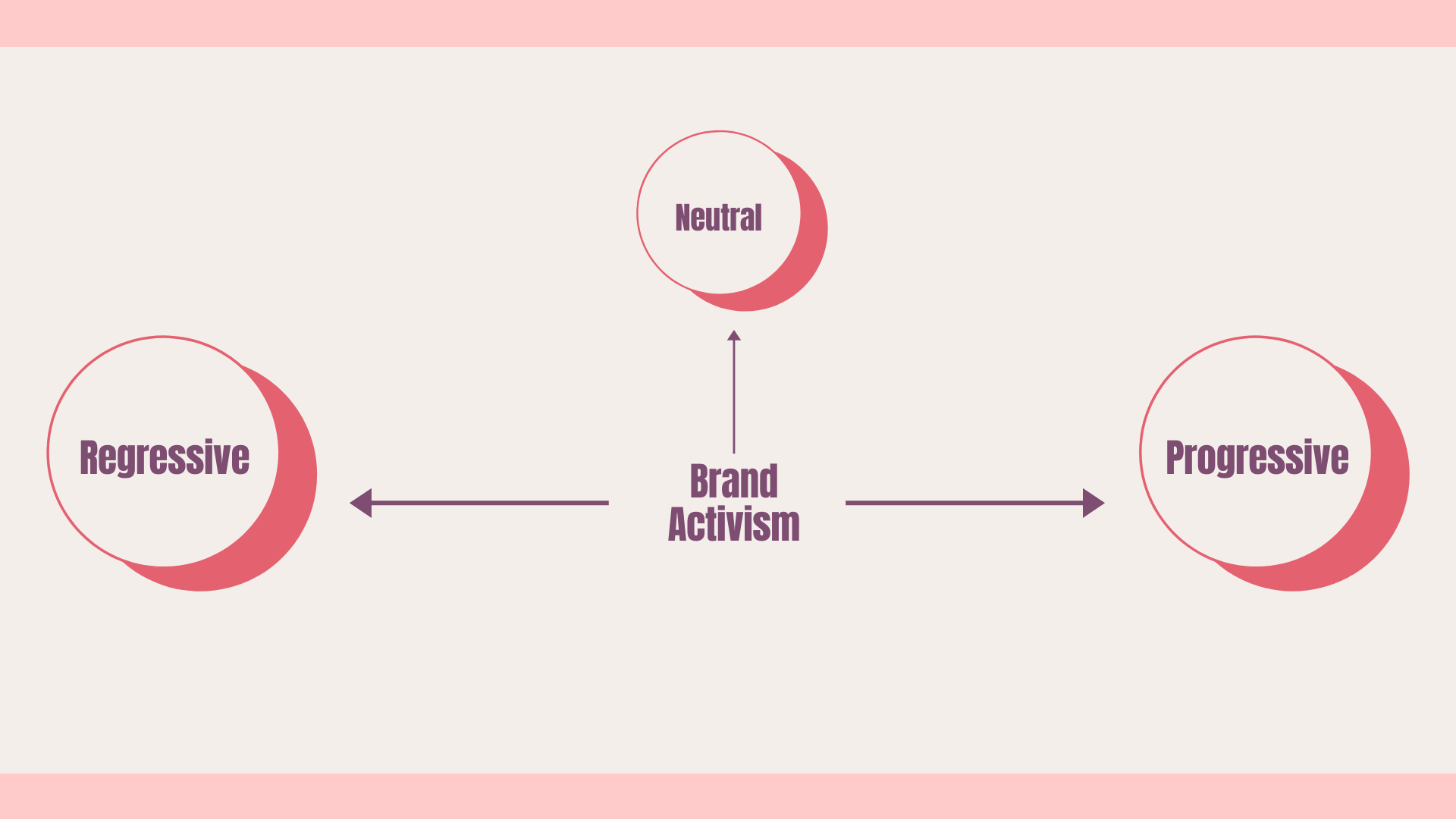
Types of Brand Activism
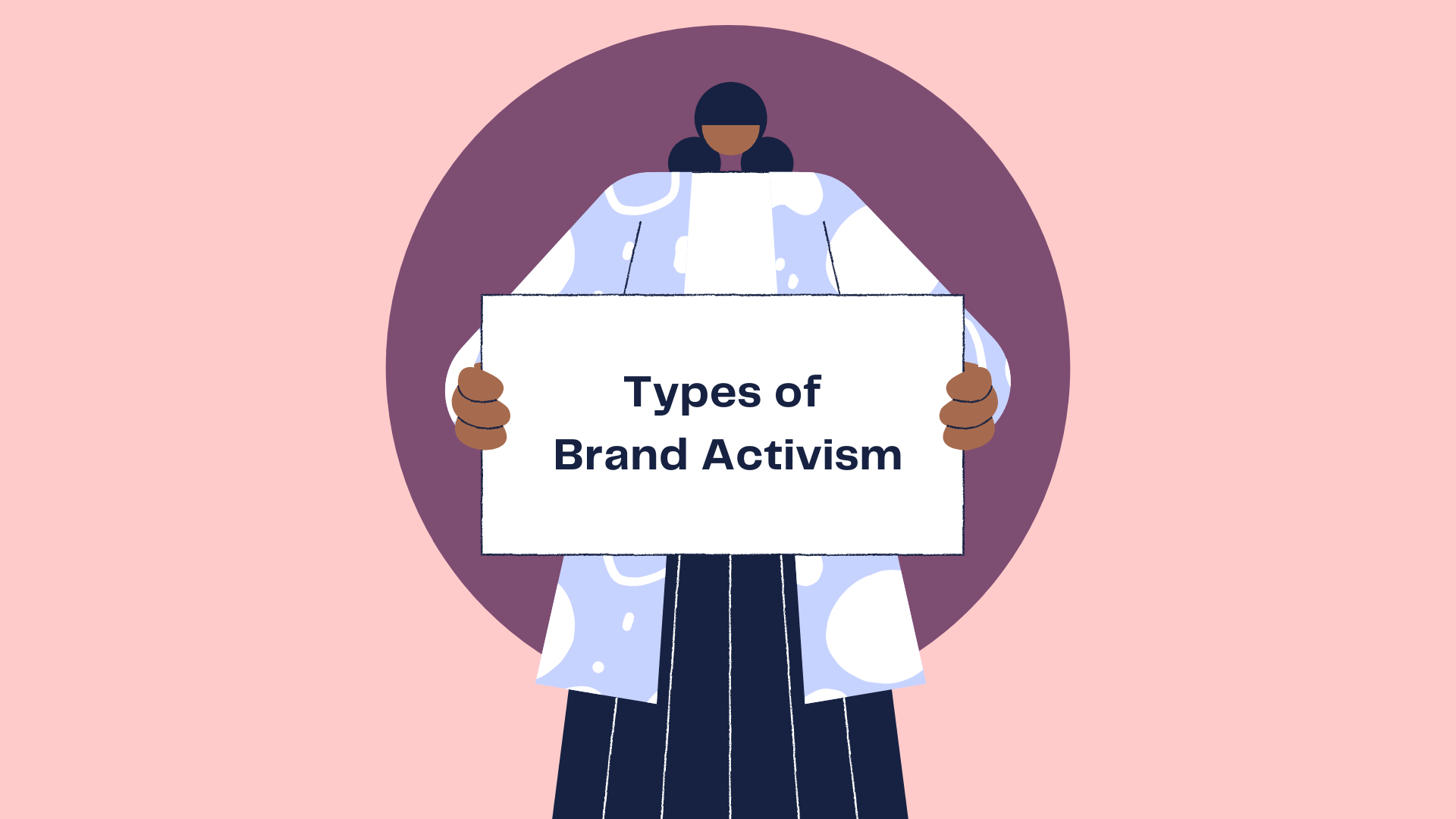
Why Brand Activism Matters
What Happens If You Don’t Take A Stance
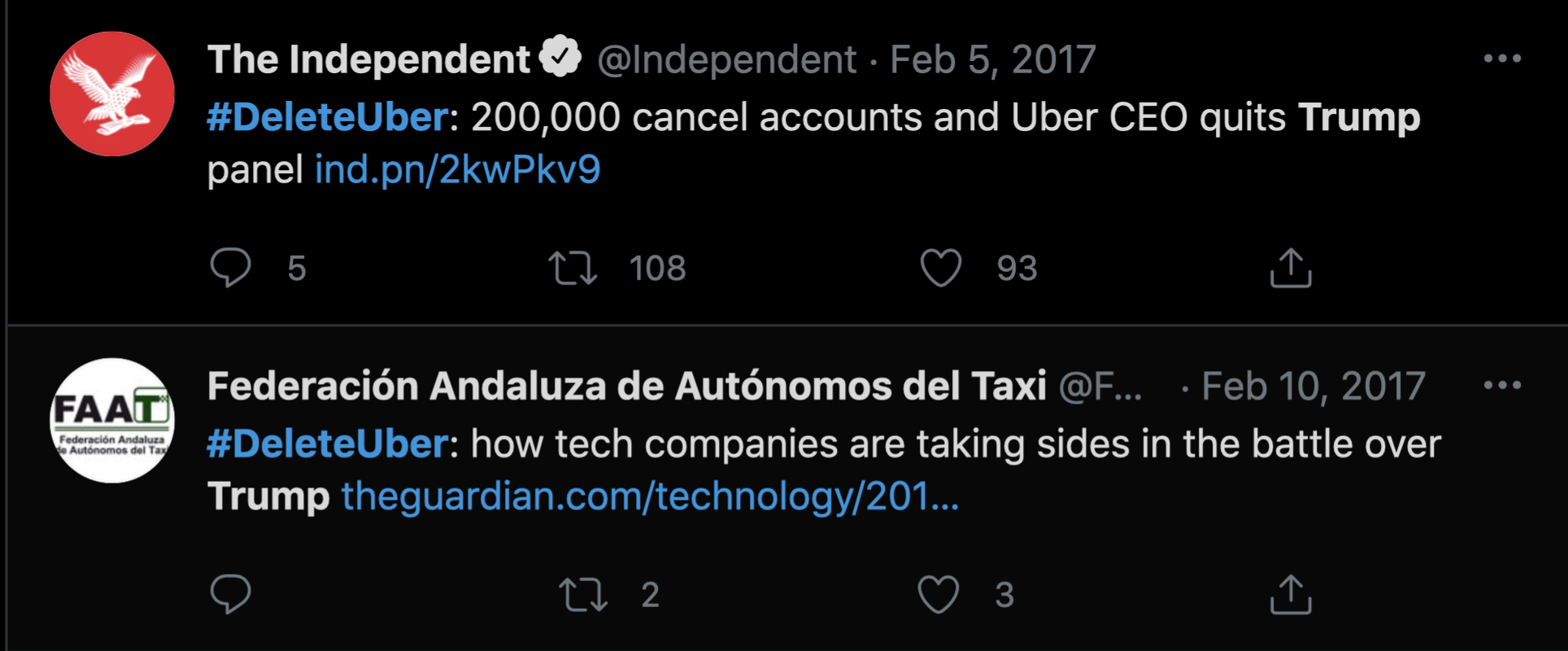
Brand Activism Benefits- Why It’s Good For Your Business

Demonstrating to your target audience that you are aware and well-informed
PR is moved by activism
Consumers want brands to step in to fill the gap
Developing trust and loyalty
Purpose-driven brands outperform their competitors
The path to success is being paved by brand activism.
Risks of Brand Activism

Brand Activism Done Right- Examples
Patagonia
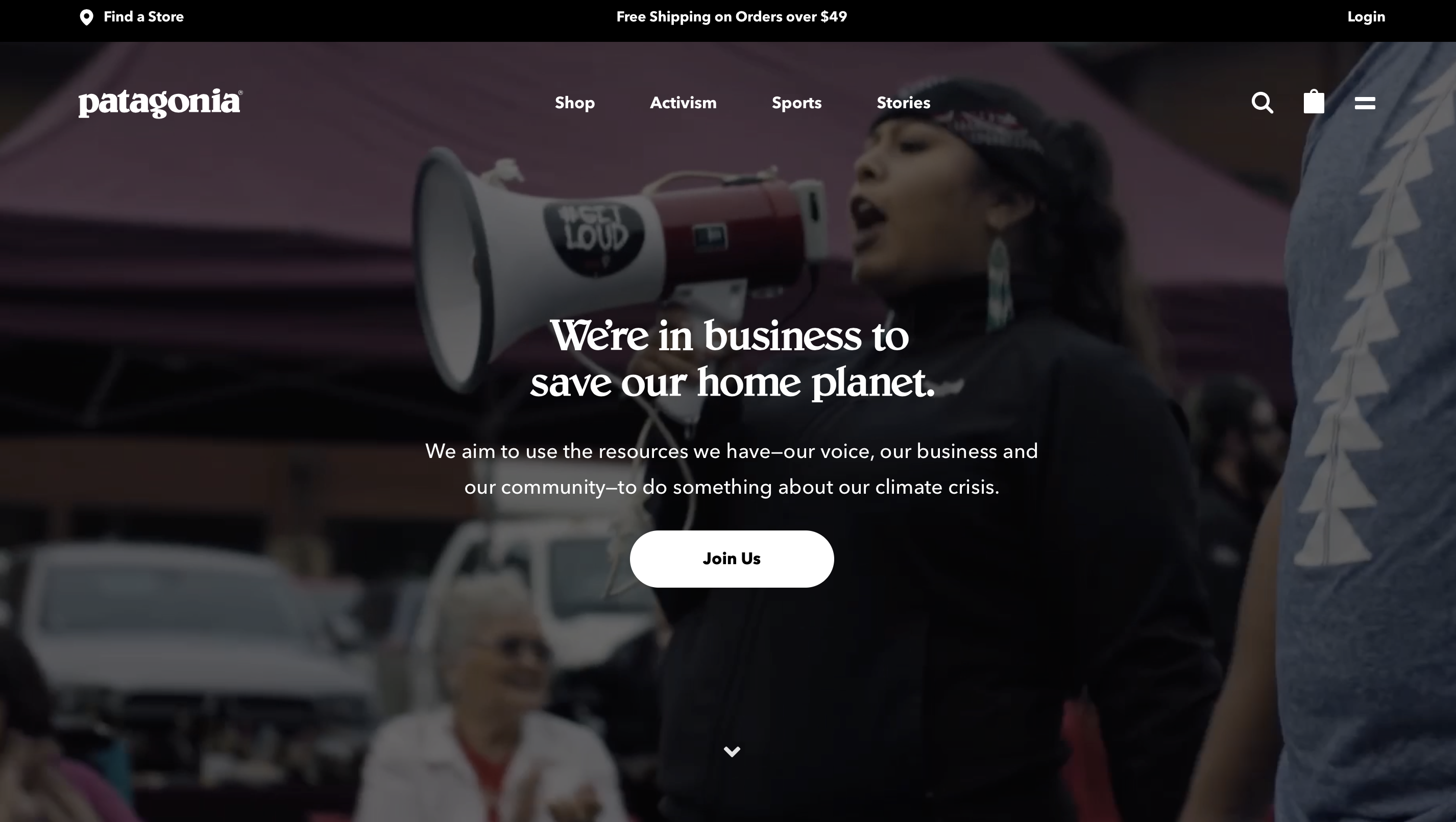
Airbnb
Nike
Other brand examples are:
Brand Activism- How to & Best Practices

Make sure your personal beliefs align with your chosen cause
Get to know your target audience
Don’t rush
Admit your mistakes
Do your research
Give proof and show results
Recognize possible risks.
Think Before Supporting A Cause
Final Thoughts
With Just Digital,
Success is Easy-Peasy Lemon-Squeezy.
When life gives us lemons, we generate results. Contact us today and we can start making lemonade.

